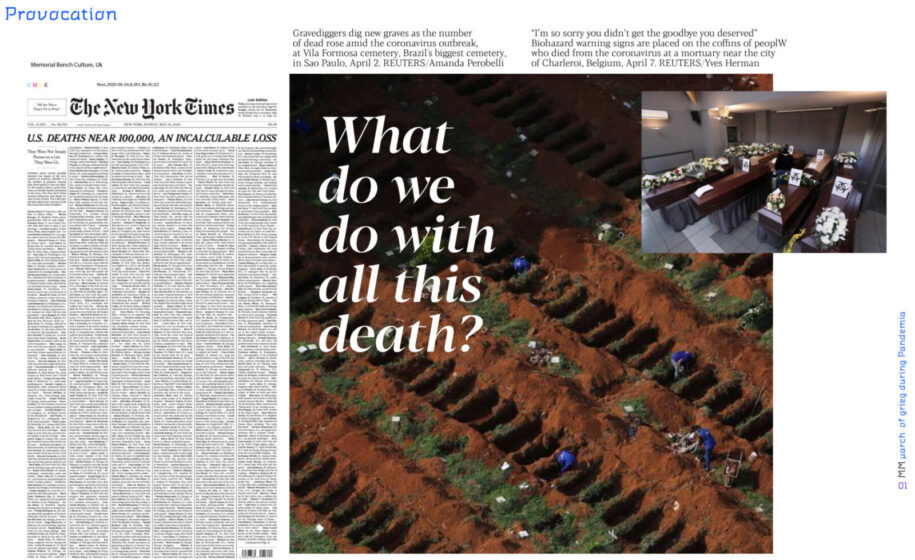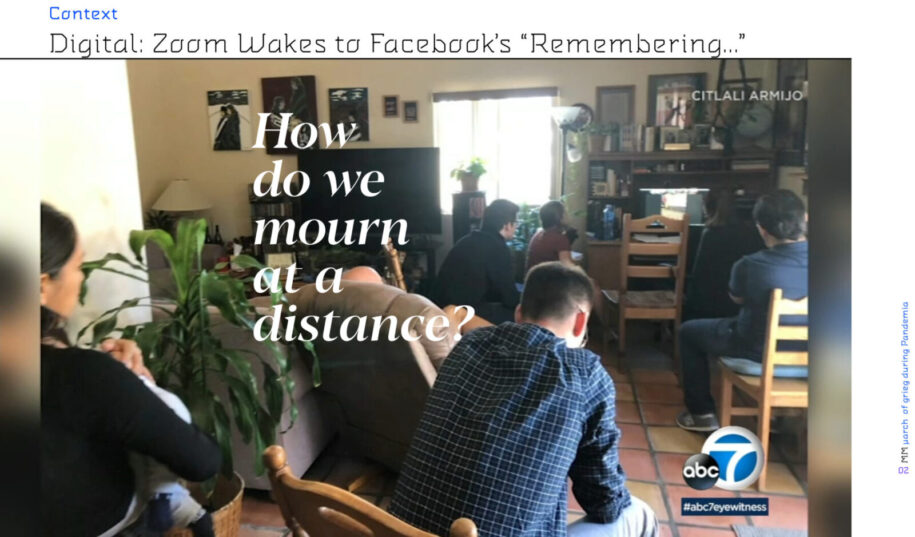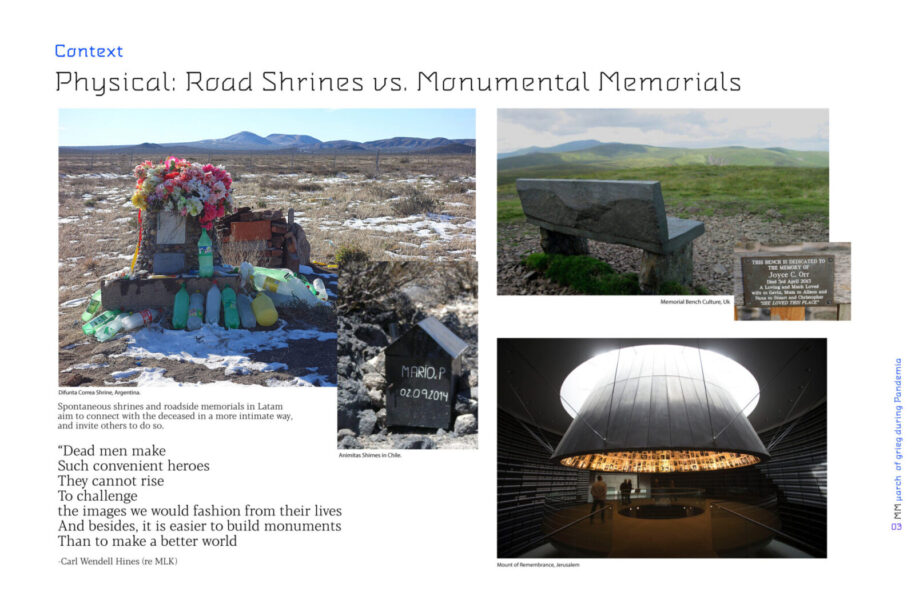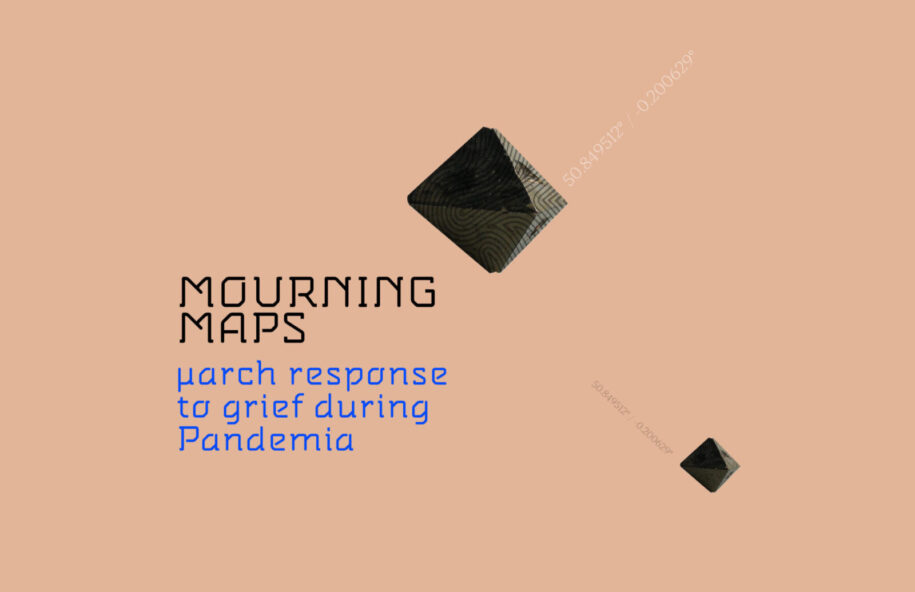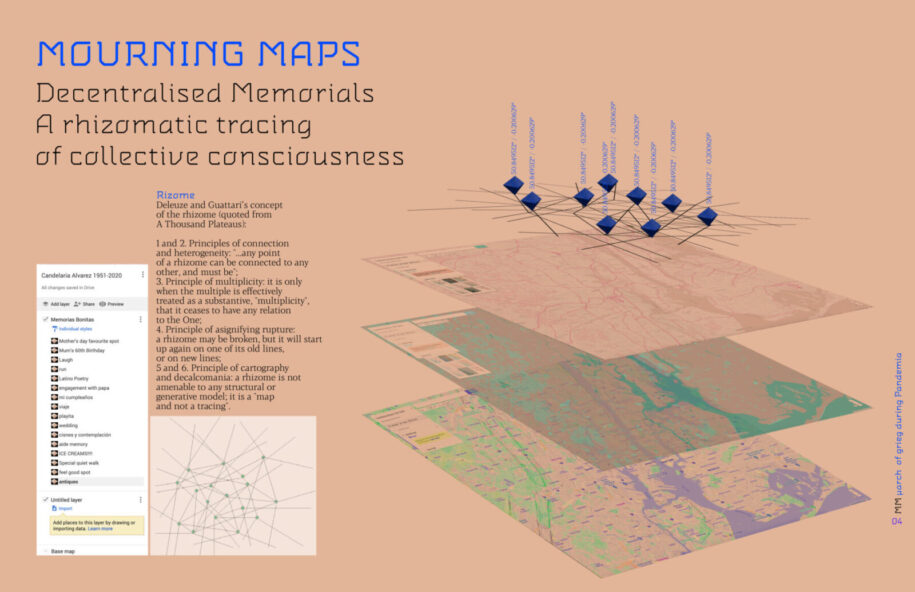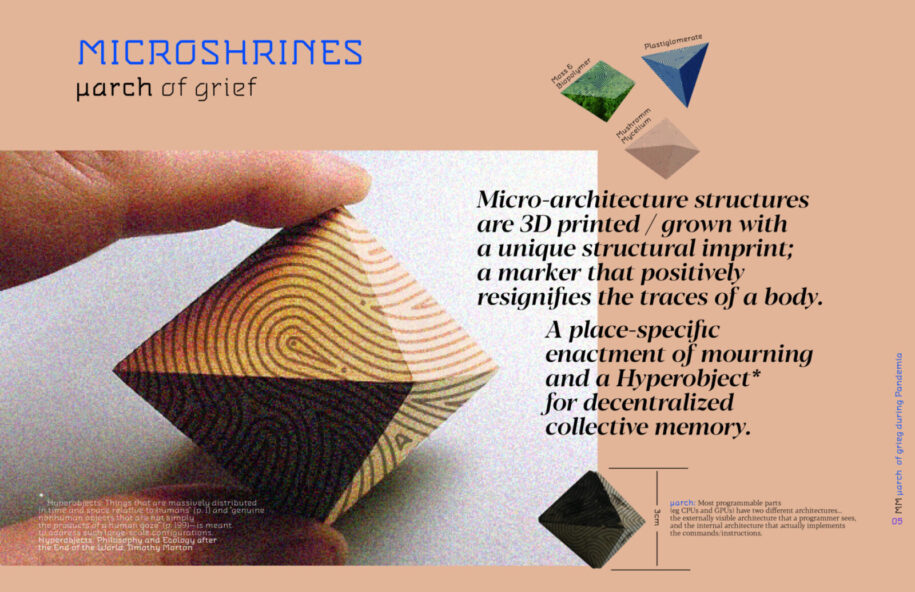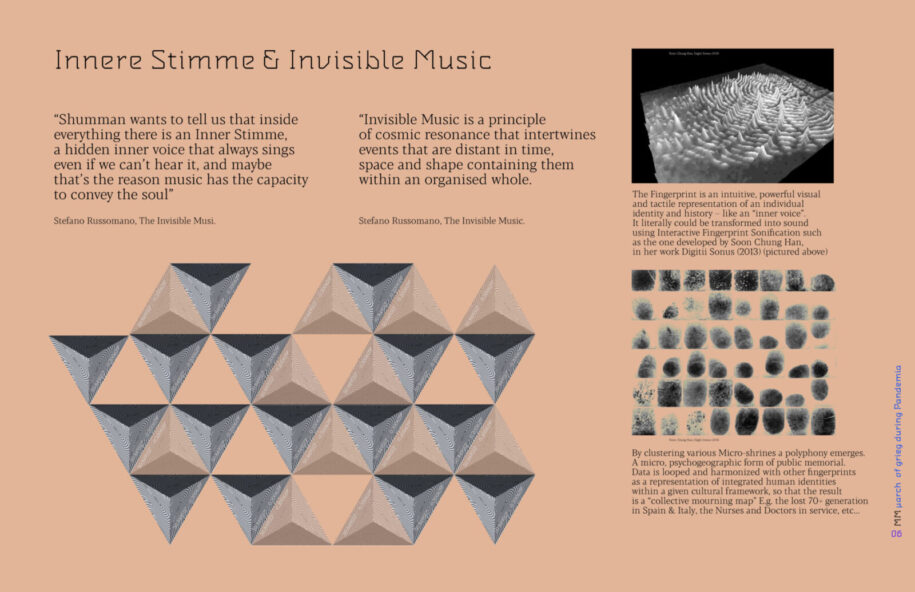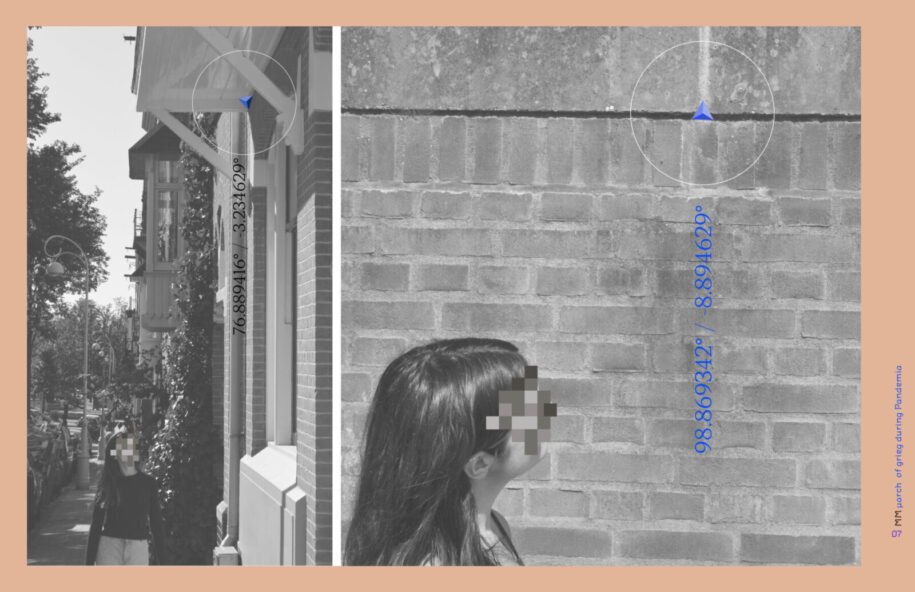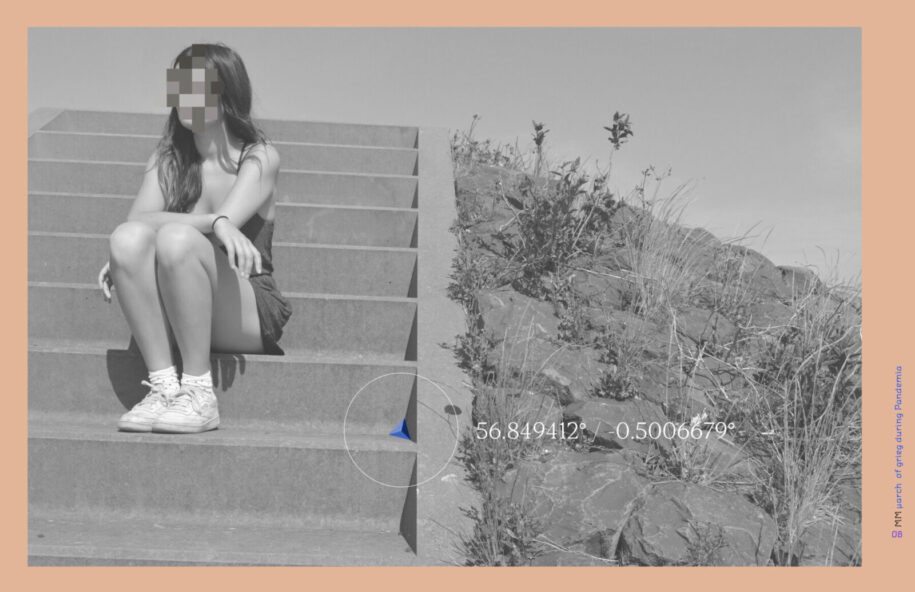Pandemic Architecture, the International Ideas Competition curated by the Design Ambassador for ARCHISEARCH.gr, completed successfully accomplishing a profound impact on the international architectural community, with the number of registrations to exceed 800, with the final proposals to exceed 400 and with participants from more than 60 different countries.
MOURNING MAPS by Gemma Jones and Malex Salamanqués from Great Britain was awarded with HONOURABLE MENTION prize out of 440 projects.
“Wow!! As two non-architects we are thrilled to have our concept and design recognised alongside so many brilliant architectural submissions. It was important for us in this new world to really consider how design can help us cope with the rupturing of our traditions and relationships with something so fundamental as death. During the pandemic, death has been communicated through constant statistics and headlines and we wanted to respond to this context with an idea rooted in culture while radically opening up rituals and structures of memorialisation”, say Gemma Jones and Malex Salamanqués.
Mourning Maps: a micro-architectural response to grief
“I’m sorry you did not receive the goodbye you deserved” echoes through obituaries. Bodies are left adrift and un-returned to places of religious and cultural roots. Overspill burial sites quarantine bodies in non-places. Families live with the dead in the home, holding bedside wakes shrouded in medical masks and gloves. The systems and norms of the death industry, like all industries are shaken. Mourners have been left with unresolved and postponed needs no longer met by the stable rituals and settings of funeral services.
Death itself has been disrupted by the pandemic.
Informal work-arounds echo the trends already emerging in many cultures pre Corona toward more intimate and creative memorial rituals and settings. Live streamed services, the Dutch tradition of “eerhaag” reimagined by lining the streets not only on the route of the hearse but standing in places of significance to the deceased. Online profiles of the dead become virtual memorial sites, where friends return to leave public declarations of love. These intimate and co-created new ways are like roadside shrines where loved ones occupy spaces outside of the confines of the formalised cemetery. In DIY shrines, memory and meaning is detached from the body and stays in the world of the living.
Mourning Maps are both a temporal, place-specific enactment of mourning and a Hyperobjects(1) for decentralized collective memory.
Mourners leave behind a Micro-Shrine in a specific place that resonates with their experience of their lost loved one; a workplace, school, first date spot, a place they sat while on the phone to them, or simply a place they mutually loved. A symbolic growth in the corners and cracks of places. These micro-architecture structures are 3D printed with a unique imprint; a marker that positively resignifies the traces of a body. The diamond form is designed to tessellate with corners and can behave modularly so that family clusters may grow. The shape contains references to sacred geometries and virtual wayfinding signalling. These signifiers of the dead populate our places, emerging rhizome-like from the environment that once shaped and has been shaped by, the deceased.
A hyper-map of the micro-shrines acts as a collective and interconnected shrine, giving us coordinates for memory journeys.
Places become imbued with stories of life lived there destabilising the dominant role of public space as an efficient theatre of consumption and production. Offering an alternative framing of memorialisation that is experienced through the complexity of many, overlapping narratives rather than through the hegemonic master narrative or historical event immortalised in statue or plaque.
These journeys offer new forms of tourism, new forms of engagement with memory, new forms of intimacy with the places that we live: full of the sweet resonations of our dead because “our spiritual life together depends on the projection of the past into the future, which will always remain precarious”(2)
1 Hyperobjects — “things that are massively distributed in time and space relative to humans” (p. 1) and “genuine nonhuman objects that are not simply the products of a human gaze” (p. 199 Timothy Morton. Hyperobjects: Philosophy and Ecology after the End of the World. Minneapolis: University of Minnesota Press, 2013. 240 pp.
2 Hagglund, M,. This Life. Secular Faith and Spiritual Freedom (New York 2019). p.359
Facts & Credits
Project title MOURNING MAPS
Participants Gemma Jones , Malex Salamanqués
Country UK
Ο διεθνής αρχιτεκτονικός διαγωνισμός ιδεών Pandemic Architecture, σε επιμέλεια της Design Ambassador για το ARCHISEARCH.gr, ολοκληρώθηκε με μεγάλη επιτυχία καταφέρνοντας να συγκεντρώσει την αμέριστη προσοχή της παγκόσμιας αρχιτεκτονικής κοινότητας, συγκεντρώνοντας πάνω από 800 συμμετοχές και περισσότερες από 400 τελικές προτάσεις από 60 διαφορετικές χώρες σε όλη την υφήλιο.
Η πρόταση MOURNING MAPS από τις Gemma Jones και Malex Salamanqués από το Ηνωμένο Βασίλειο απέσπασε τη διάκριση HONOURABLE MENTION στο σύνολο 440 συμμετοχών.
“Ουάου!! Ως δύο μη αρχιτέκτονες είμαστε ενθουσιασμένες που οι ιδέες και ο σχεδιασμός μας αναγνωρίστηκε ανάμεσα σε τόσες εξαιρετικές αρχιτεκτονικές συμμετοχές. Ήταν σημαντικό για εμάς, εντός αυτής της νέας πραγματικότητας, ν’ αναλύσουμε εις βάθος πώς ο σχεδιασμός μπορεί να μας βοηθήσει να αντιμετωπίσουμε τη ρήξη των παραδόσεων και των σχέσεών μας από κάτι τόσο θεμελιώδες όπως ο θάνατος. Κατά τη διάρκεια της πανδημίας, ο θάνατος έχει επικοινωνηθεί μέσω στατιστικών στοιχείων και πρωτοσέλιδων και θέλαμε να ανταποκριθούμε σε αυτό το πλαίσιο μέσω μιας ιδέας ριζωμένης στον πολιτισμό, διανοίγοντας δυναμικά συζητήσεις γύρω από τελετουργικές διαδικασίες και μνημονικές δομές”, αναφέρουν οι Gemma Jones και Malex Salamanqués.
“Mourning maps”: μία μικρό-αρχιτεκτονική απόκριση στη θλίψη
“Λυπάμαι που δε λάβατε το αντίο που αξίζατε” αντηχεί εν μέσω των νεκρολογιών. Τα σώματα αφήνονται ανεστραμμένα και δεν επιστρέφονται σε θρησκευτικές και πολιτιστικές ρίζες. Οικόπεδο ομαδικών ταφών σωμάτων που παραμένουν σε καραντίνα, και βρίσκονται σε μη-μέρη. Οι οικογένειες ζουν με τους νεκρούς στο σπίτι, κρατώντας στα κομοδίνα ιατρικές μάσκες και γάντια. Τα συστήματα και οι κανόνες της βιομηχανίας θανάτου, όπως όλες οι βιομηχανίες, βρίσκονται σε αναταραχή. Οι πενθούντες και οι αναβαλλόμενες ανάγκες τους, δεν ικανοποιούνται πλέον από τις σταθερές υπηρεσίες των κηδειών, που γνωρίζαμε έως σήμερα.
Ο ίδιος ο θάνατος έχει διαταραχθεί από την πανδημία.
Οι άτυπες λύσεις αντανακλούν τις τάσεις που έχουν ήδη αναδυθεί σε πολλούς πολιτισμούς πριν από τον κορωνοϊό, προς πιο οικεία και δημιουργικά τελετουργικά μνημεία και συνήθειες. Υπηρεσίες ζωντανής αναμετάδοσης, η ολλανδική παράδοση του “eerhaag” που επαναπροσδιορίζεται με την επένδυση των δρόμων, όχι μόνο με τη διαδρομή της νεκροφόρας, αλλά και με σημεία σημαντικής σημασίας για τον αποθανόντα. Τα διαδικτυακά προφίλ των νεκρών γίνονται εικονικοί μνημειακοί ιστότοποι, όπου οι φίλοι επιστρέφουν για να αφήσουν δημόσιες δηλώσεις αγάπης. Αυτοί οι οικείοι και συνδημιουργημένοι νέοι τρόποι είναι σαν τα ιερά του δρόμου, όπου τα αγαπημένα άτομα καταλαμβάνουν χώρους, εκτός των τυποποιημένων ορίων του νεκροταφείου. Στους ιερούς “DIY” τόπους, η μνήμη και το νόημα διαχωρίζονται από το σώμα και παραμένουν στον κόσμο των ζωντανών.
Οι “Mourning Maps” (Χάρτες Πένθους) είναι ταυτόχρονα μια χρονική, συγκεκριμένη θέση για το πένθος και ένα “Hyperobject” (υπεραντικείμενο), με σκοπό την αποκεντρωμένη συλλογική μνήμη.
Οι πενθούντες αφήνουν πίσω τους ένα “Micro-Shrine” (Μικρό-Ναό), σε ένα συγκεκριμένο μέρος, που αντιστοιχεί στις εμπειρίες που έζησαν με τα αγαπημένα τους πρόσωπα. Στο χώρο εργασίας, το σχολείο, το σημείο πρώτου ραντεβού, ένα μέρος όπου κάθονταν ενώ τους τηλεφώνησαν ή απλά ένα μέρος που αγαπούσαν και οι δύο. Μια συμβολική ανάπτυξη στις γωνιές και τις ρωγμές των τόπων. Αυτές οι μικρό-αρχιτεκτονικές δομές είναι τρισδιάστατες εκτυπώσεις με ένα μοναδικό αποτύπωμα. Ένας δείκτης που επανασηματοδοτεί τα ίχνη ενός σώματος. Η διαμαντοειδής μορφή τους είναι σχεδιασμένη έτσι ώστε να δημιουργούνται ψηφιδωτές γωνιές, οι οποίες έχουν τη δυνατότητα να αρθρώνονται, ώστε να συνδυάζονται αυτά που αναπτύσσει κάθε οικογένεια. Το σχήμα έχει αναφορές σε ιερές γεωμετρίες και η διαδρομή σηματοδοτείται εικονικά. Αυτά τα σημάδια των εκλιπόντων, κατοικούν στους τόπους που εμείς εξακολουθούμε να κατοικούμε. Οι άνθρωποι που έφυγαν αναδύονται σαν ριζώματα από το περιβάλλον που κάποτε διαμορφώθηκε και είχε διαμορφωθεί από αυτούς.
Ένας υπέρ-χάρτης των μικρό-ναών, συμπεριφέρεται ως ένα πολυσυλλεκτικό ιερό, που αποτελείται από μικρότερα, συνδεδεμένα μεταξύ τους ιερά, δίνοντας συντεταγμένες για ένα ταξίδι μνήμης.
Τα μέρη διαποτίζονται με ιστορίες ζωής, που διαδραματίστηκαν εκεί. Έτσι προσφέρεται ένα εναλλακτικό πλαίσιο δημιουργίας μνημείων, που βιώνεται μέσα από την πολυπλοκότητα πολλών, αλληλεπικαλυπτόμενων αφηγήσεων παρά μέσω της ηγεμονικής κύριας αφήγησης ή ιστορικού γεγονότος που αθανατοποιείται σε κάποιο άγαλμα ή μία πλάκα. Αυτά τα ταξίδια προσφέρουν νέες μορφές τουρισμού, νέες μορφές σύνδεσης με τη μνήμη, νέες μορφές οικειότητας με τα μέρη που ζούμε: γεμάτα από τις γλυκές αντηχήσεις των νεκρών μας, επειδή “η πνευματική μας ζωή εξαρτάται από την προβολή του παρελθόντος στο μέλλον”. (Hagglund, M,. This Life. Secular Faith and Spiritual Freedom (New York 2019). σελ.359)
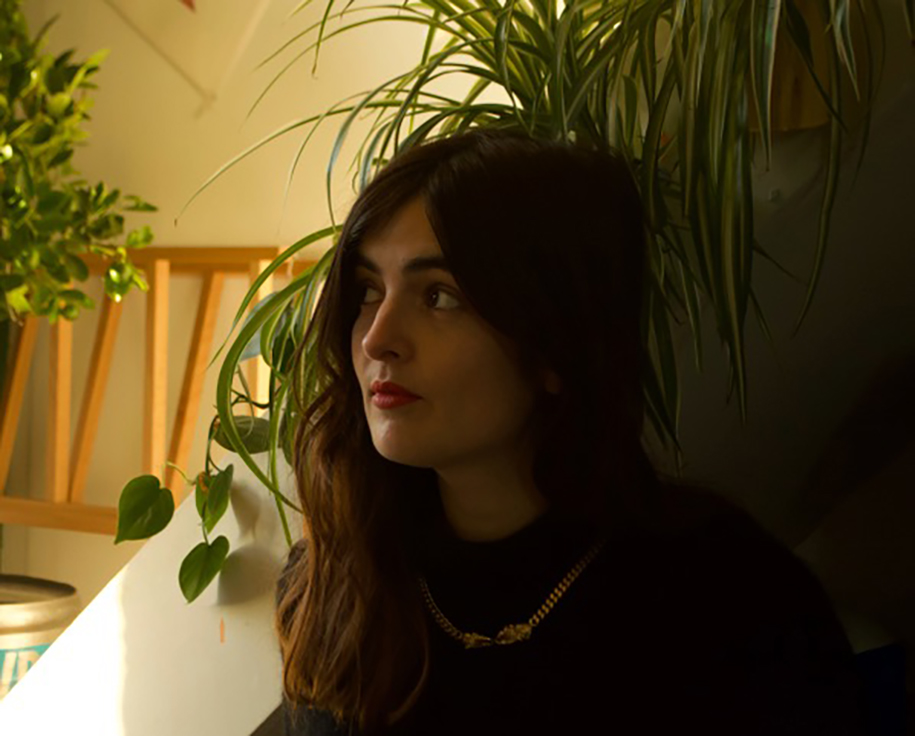
Στοιχεία πρότασης
Τίτλος έργου MOURNING MAPS
Ομάδα Gemma Jones, Malex Salamanqués
Χώρα Ηνωμένο Βασίλειο
Check out more about the winning proposals of Pandemic Architecture International Ideas Competition, here!
Διαβάστε περισσότερα για τις νικητήριες προτάσεις του διεθνούς αρχιτεκτονικού διαγωνισμού ιδεών Pandemic Architecture, εδώ!
READ ALSO: PANDEMIC LIFE TOWER | Pandemic Architecture HONOURABLE MENTIONS
